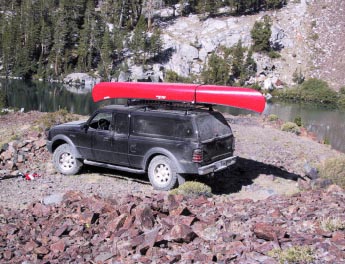We may earn revenue from the products available on this page and participate in affiliate programs. Learn More ›
This time of year, driving is a messy business. Unstable late winter and early spring weather leaves paved roads wet and slushy more often than not, while dirt roads are dirt in name only. “Gooey roads” is more like it.
Those who live out West who battle wet caliche soil on country roads know just what I’m talking about, as do those in New England, where “mud season” can run from March through April. Find-ing traction in these conditions can be a challenge. But you can help your truck stay pointed in the right direction by using tires designed to handle sloppy terrain.
Choosing Snow Tires
Dedicated snow tires remain the best choice when there’s still snow on the ground. The specially formulated treads stay soft and pliant to grip the road, even in sub-zero temperatures. Snow tires also have lots of small cuts in the tread blocks, called “sipes,” which bite into slippery surfaces.
If you’re in the market for a new set of snow tires, look for a mountain-and-snowflake icon on the tire’s sidewall. That means the tire has passed standardized industry tests for wintertime performance. Bridgestone’s Blizzak and Winter Dueler, Michelin’s Latitude X-Ice and Pirelli’s Scorpion Ice & Snow are available in sizes for trucks.
Snow tires will wear out quickly if used on dry pavement or when the weather starts to warm. So as winter melts away, it’s best to dismount the snow tires in favor of rubber that will work in all weather conditions. Tire experts agree that the all-terrain tires often offered as standard equipment on 4×4 pickup trucks work best for this task.
[pagebreak] All-Terrain Tires
The same traits that make an all-terrain tire well suited for varying trail types also allow it to handle sloppy conditions. Large, siped tread blocks bite into any road surface, while the big spaces between the blocks-called “voids”-evacuate water from between the road and the tire to prevent hydroplaning. These voids also keep mud from clinging to the tire and diminishing its ability to bite the road.
The all-terrain’s tread compound isn’t as soft as a snow tire’s, but it’s still softer than a high-mileage street tire, so it conforms to and holds the road better. Just about every tire maker offers an all-terrain tire of some type; two of the most popular are the BFGoodrich All-Terrain T/A and the Goodyear Wrangler GS-A.
Max-Traction Terrain
All-terrain tires are a good choice for the outdoorsman who drives over a mix of paved and unpaved surfaces (wet or dry). However, if your hunting rig is driven in the dirt only, a max- traction or mud tire will be best for spring’s thick muck.
A mud tire’s tread blocks and voids are even more aggressive than those on all-terrain tires, giving it big cleats to claw through the goo and mire-a huge advantage if you spend most of your time off-roading or if you use your truck solely to tool around on your deer lease. The downside, of course, is that big treads really sing when the tire is driven on pavement at highway speeds. The mud tire’s hard tread compound won’t grip the street as well, either, especially in wet-weather conditions. So consider your driving needs carefully before deciding between an all-terrain and a mud tire.
Several good maximum-traction tires for truck enthusiasts to consider include the BFGoodrich Mud-Terrain T/A, Firestone’s Destination M/T and the Wrangler MT/R from Goodyear.
[pagebreak] Smooth-Riding Treads
If you drive 200 miles on the highway for every two miles off-road, consider one of the new breed of pavement- oriented truck tires. Products in this new tire category (spurred by the popularity of full-size trucks and SUVs) put a premium on ride and handling qualities, have tread patterns optimized to grip in wet weather and are available in sizes to fit most light-duty pickups. The latest entriees in this class include the Bridgestone Dueler H/L Alenza and the Toyo Open Country H/T.
While few of us like the sloppy weather that comes in early spring, it’s good to know that tire technology is on our side, even when Mother Nature isn’t.
Tips for Driving in Slop
Use your momentum. Don’t stop until you want to, or you may be there for a while.
Don’t over-drive the conditions. Ham-handed steering and brake-pedal stabbing will cause your truck to plow, not turn or stop.
Go easy on the gas pedal. In a similar vein, excessive throttle can spin tires, which will dig you in, not send you out. Drive only as fast as you need to.
Watch for ice. Beware of road- and trailside shadows that hide ice patches.
Try turning. If you are in 4WD and bogged down in mud, turning your front tires to lock may help them grab some traction.
Get a grip. Many people who live in snow country carry bags of sand to use for traction in case they get stuck in slippery snow, but a bag of kitty litter works just as well and weighs a lot less.
Carry traction aids. Keep a tow strap, winch and high-lift jack with you in case you get stuck. Have a cell phone handy for really sticky situations.
